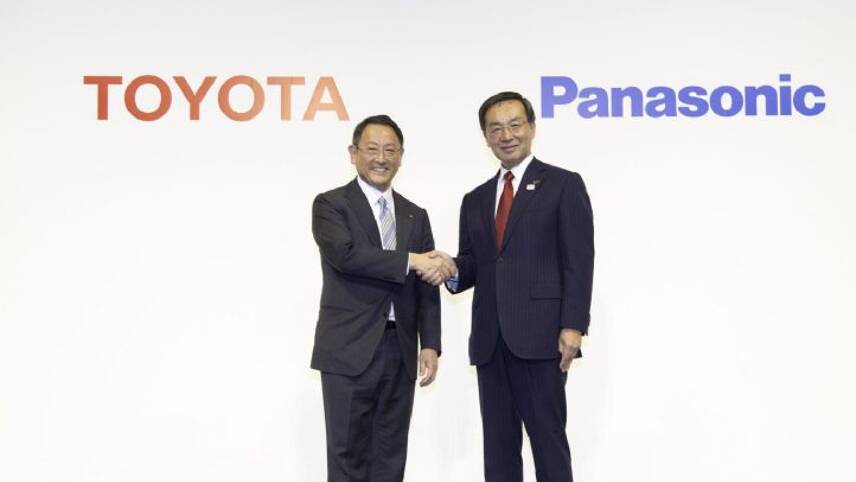Register for free and continue reading
Join our growing army of changemakers and get unlimited access to our premium content

Toyota's vice president Shigeki Terashi and Panasonic's senior executive officer Masahisa Shibata announced the partnership in Tokyo today (22 January)
The partnership, which was confirmed at a summit in Tokyo today (22 January) after almost two years of speculation, will see the two companies establish a joint venture focused on prism-shaped lithium-ion batteries by the end of 2020.
The venture, which Panasonic claims will create the “next generation” of EV batteries, will fund research and development projects, battery manufacturing and engineer training.
Research and development will focus specifically on some of the most commonly cited barriers to EV adoption, including battery range, charge time and safety. Specifically, the two companies will work to bring a battery with fifty times more capacity than the average 2018 model to the global market by 2020.
Because concerns about how corporates can minimise the environmental impact of sourcing the metals they will need to produce new batteries are beginning to mount as EV uptake rises, recyclability and reuse of end-of-life batteries will also be a key focus for both Toyota and Panasonic.
New batteries developed under the joint venture will be sold through Panasonic to Mazda and Toyota subsidiaries Daihatsu Motor and Subaru, as well as Toyota itself.
“We have high expectations for the new company, including―as we aim to deliver ever-better electrified vehicles to even more customers―its role in fulfilling our plans for the popularisation of electrified vehicles,” Toyota’s vice president Shigeki Terashi said.
“By contributing to the popularisation of Toyota’s and other automakers’ electrified vehicles, we want to help find solutions to issues such as global warming, environment-related challenges and energy-related challenges.”
In order to set up the joint venture, Panasonic will shift five of its EV battery production facilities across Asia to the new company within the next 24 months. Toyota, meanwhile, will transfer up to 3,500 of its staff to these facilities, along with manufacturing equipment. The company said in a statement that the partnership would help it minimise investment costs as it strives to sell 5.5 million EVs per year by 2030 – triple its current rate.
Let’s go places, sustainably
In 2015, Toyota unveiled a series of ambitious new environmental targets with an overall aim to eliminate the use of gasoline cars and cut average carbon emissions from all of its vehicles and products by more than 90% by 2050.
Since then, it has launched a string of innovative EV models, including the zero-emission Mirai saloon, which is powered by a hydrogen-electric battery. With a range of 300 miles on a full tank of hydrogen, the model has attracted interest from the likes of the International Olympic Committee and Green Tomato Cars.
Looking to the future, the carmaker is planning to launch a range of electric taxis, minibuses and buses by 2020, when it will showcase them at the Olympic Games in Tokyo. During the event, Toyota will use the city as a testbed for its “Mobility for All” vision and carry out its first real-world trial of the e-Palette – an autonomous EV designed for ride-sharing.
Sarah George


I question the concept of "a battery with fifty times more capacity than the average 2018 model".
The meaning is, presumably, a battery of the similar dimensions, but with fifty times the number of kilowatt-hours contained therein.
The manner in which this type battery operates depends upon a specific reversible reaction, which is associated with one or more electrons. The mass of the chemicals involved in each reaction is fixed according to the chemical equation involved. The reduction in the weight of these seems highly unlikely to be reduced by a factor of fifty; this seems like some administrative dream, but I stand to be corrected.
Richard Phillips